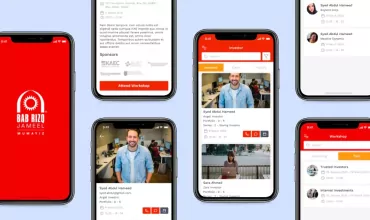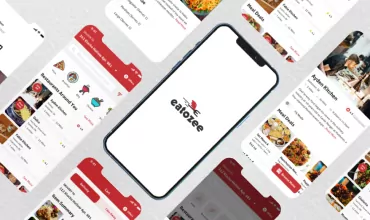React Native vs. Flutter: Select the Best Framework for Your Next Project

Table of Contents
This blog will compare two extensively leveraged frameworks to develop mobile applications – React Native vs. Flutter. Let us comprehend the difference between Flutter vs. React Native development speed, performance levels, learning curve, community backing, and use cases.
React Native and Flutter, although being the two comparable sides of cross-platform application development, are always greeted as steadfast competitors. Both assist programmers in reducing the Time to Market (TTM) by enabling engaging business apps to organizations, thereby enhancing their productivity levels.
At IndiaNIC, we assist our clientele to grow and mature their businesses using our practical approaches to develop the best industry applications. While we don’t suggest discriminating in selecting the correct technology framework, be it React Native vs. Flutter speed or presentation, this blog will place the limelight to leverage a more specific approach instead.
1) What is React Native?
React Native is a leading open-source framework that operates on JavaScript. It principally emphasizes the native rendering of apps compatible with iOS and Android.
React Native is built with the blend of XML – Esque markup and JavaScript, called JSX. It is supported by Facebook, with 50+ devoted engineering professionals working on the framework in the current scenario.
React Native Statistics
- In 2021, around 38 percent of programmers were reported to leverage React Native for cross-platform app development.
- React JS is the utmost in-demand web-based framework, with 40.41 percent of developers indicating they leverage it to build web apps.
- Around 58 percent of the programming community likes utilizing React Native.
React Native Use Cases
- Build swift prototype apps
- Straightforward cross-platform apps
- Applications with simplified User Interface
- Apps that look native with UX leveraging FlexBox
- Applications with reusable elements
- Applications that run with synchronous APIs
Leading Apps made in React Native

- Wix – Attained higher speed, performance, and agility, building configurable navigations and screen choices in React Native.
- Facebook – Developed a superior and supportive mobile user interface with straightforward navigation.
- Walmart – Enhanced user experience by developing seamless in-app animations identical to native features.
- Bloomberg – Modernized simple-to-access and customized content for users with automated programming refreshing functionalities.
- Instagram – Enabled push notification in the structure of WebView without developing navigation infrastructure.
- SoundCloud – Bridged the precise time gap amid upgrades and reinforced versions concurrently for both Android and iOS.
2) What is Flutter?
Flutter is an open-source framework that operates with a language known as Dart, developed by Google.
Flutter facilitates cross-platform application development and provides developers an effortless approach to create and deploy natively-compiled apps for iOS, Android, desktop, and web – all leveraging a single codebase.
Flutter Statistics
- Around 42 percent of the population utilize Flutter to develop cross-platform mobile apps globally.
- Flutter is liked by approximately 68 percent of the development community.
- About 13.55 percent of the community selects Flutter for its precise tools and libraries.
Flutter Use Cases
- Enable MVP for mobile app development
- Build applications with material design
- Applications that run with OS-level functions
- Modern OS plugins with straightforward logic
- Higher productivity apps with Skia rendering engine
- Flexible user interface with superior widgets
- Reactivate applications with immense data integration
Leading Apps made in Flutter

- Groupon – It leverages Flutter to assist merchants track and monitoring campaign performance, handling client contentment, and getting practical support.
- Google Ads – It uses Dart packages, useful plugins, and utility classes of Flutter to offer portable UX in both iOS and Android.
- Tencent – Developed a linked and shared device experience between user base with multi-platform backing with fewer than five programmers.
- Alibaba – Built a single-tap navigation experience for all apps with higher FPS and a single code base.
- eBay – Used multifaceted and tailored edge-powered AI functionalities by blending Flutter and Firebase to craft automation with ML for eBay Motors.
- BMW – The company built a higher-performance UI by applying flutter_bloc for managing projects
React Native vs. Flutter
| React Native | Flutter | |
|---|---|---|
| Official Release | March 2015, F8 Conference | December 2018, Google I/O |
| Created By | ||
| Free & Open Source | Yes | Yes |
| Programming Language | JavaScript | Dart |
| Popularity | 95,300 stars on GitHub (2021) | 120,000 Stars on GitHub (2021) |
| Hot Reload | Yes | Yes |
| Native Performance | Effective | Effective |
| User Interface | App elements look just like native ones (a button on an iOS device appears just like a native iOS button and is equally similar on Android). | Apps look as upright on modern operating systems as they do on conventional versions. |
| Sharing Code | There are libraries that enable you to utilize the same code to develop iOS, Android, web, and Windows10 applications. | Flutter 2 can have the same code base to ship native applications to 5 operating systems: iOS, Android, Windows, macOS, and Linux, and web experiences on Firefox, Chrome, Safari & Edge. |
| Time-To-Market | Probably as swift as programming with Flutter. | Swifter than native development. |
| Competitive Benefits |
|
|
| When It Is Not the Right Fit | Your application requires managing less common or more specific tasks such as calculations in the background. |
|
Key Takeaways
Flutter vs. React Native, or React Native vs. Flutter, the conclusion is that there is no one collectively better technology framework. Every tech project is different and exceptional. The selected framework should rely entirely on the project’s business, operational and technical requirements.
In the most common terms, Flutter is healthier for more prominent apps and applications that need native programming. Thinking about React Native vs. Flutter pros and cons, React Native is great for apps that can benefit from its plug-and-play modules and large-sized developer community.
FAQs on React Native vs. Flutter
Is Flutter easier than React Native?
Flutter is easier to leverage as it is more resilient to upgrades. So, when iOS or Android updates the OS, the application will stay the same. However, React Native relies on native components, so that some issues can appear in the launching of the application.
Will Flutter replace React Native?
React Native is still famous and used, even as Flutter quickly matures in popularity amongst development teams.
Why is React Native better than Flutter?
React Native is simple to install, and unlike Flutter, it builds packages. React Native is effective for mobile applications. It offers a slick, seamless, and responsive UI while lessening load time.
Why is Flutter better than React Native?
Flutter is most substantial gain is its ease of development. Flutter enables write once, operate anywhere. That means you merely have to write one set of code and facilitate the same on each platform you need.
What is the future of Flutter?
Programmers are confident that the future of application development belongs to Flutter with its swiftness in setting successful trends in mobile app development.



